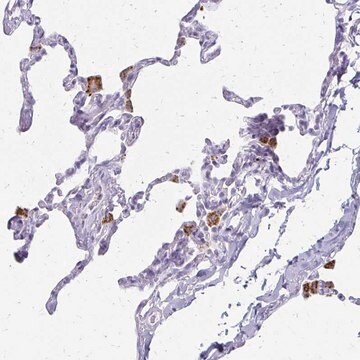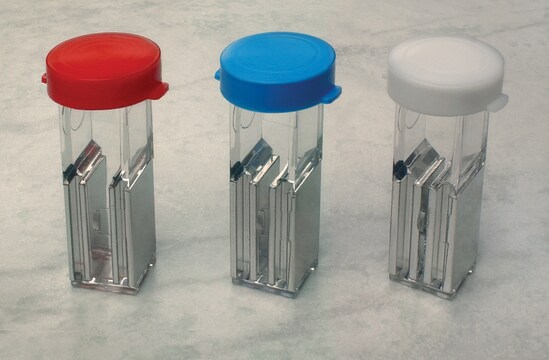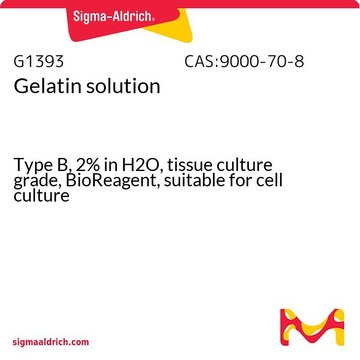O1139
Anti-Osteoprotegerin antibody produced in goat
affinity isolated antibody, lyophilized powder
Synonym(s):
Anti-OPG
Sign Into View Organizational & Contract Pricing
All Photos(1)
About This Item
Recommended Products
biological source
goat
Quality Level
conjugate
unconjugated
antibody form
affinity isolated antibody
antibody product type
primary antibodies
clone
polyclonal
form
lyophilized powder
species reactivity
mouse
technique(s)
immunohistochemistry: 5-15 μg/mL
neutralization: suitable
western blot: 0.1-0.2 μg/mL
UniProt accession no.
storage temp.
−20°C
target post-translational modification
unmodified
Gene Information
mouse ... Tnfrsf11b(18383)
General description
Osteoprotegerin (OPG) secreted by osteoblasts and osteogenis stromal stem cells belongs to the TNF receptor superfamily. OPG is expressed in bone marrow, osteoblasts, heart, lung, kidney, thymus, B lymphocytes, chondrocytes and smooth muscle cells. The ratio of OPG and receptor activator of NF-κB Ligand (RANKL) is crucial determining the bone mass. Receptor activator of NF-κB (RANK)/RANKL/OPG axis decides the bone biology. OPG binds RANKL and prevents the activation of osteoclasts, the cells that deplete bone mass. Excess levels of OPG lead to osteopetrosis while deficiency results in osteoporosis. The RANK/RANKL/OPG pathway mediates the activation of multiple pathways such as NF-κB, Akt, JNK, and MAPK
Anti-osteoprotegerin specifically reacts with recombinant mouse OPG. The antibody may cross react with human OPG (25% homology).
Anti-osteoprotegerin specifically reacts with recombinant mouse OPG. The antibody may cross react with human OPG (25% homology).
Specificity
The antibody has the ability to neutralize the biological activity of recombinant mouse OPG.
Immunogen
purified recombinant mouse osteoprotegerin expressed in mouse NSO cells.
Application
Anti-osteoprotegerin antibody may be used to neutralize mouse OPG at neutralization dose (ND50) of 0.5-2 μg/ml. The antibody is suitable for immunoblotting at a working concentration of 0.1-0.2 μg/ml.
Physical form
Lyophilized from a 0.2 μm filtered solution in phosphate buffered saline containing carbohydrates.
Disclaimer
Unless otherwise stated in our catalog or other company documentation accompanying the product(s), our products are intended for research use only and are not to be used for any other purpose, which includes but is not limited to, unauthorized commercial uses, in vitro diagnostic uses, ex vivo or in vivo therapeutic uses or any type of consumption or application to humans or animals.
Not finding the right product?
Try our Product Selector Tool.
Storage Class Code
11 - Combustible Solids
WGK
WGK 1
Flash Point(F)
Not applicable
Flash Point(C)
Not applicable
Personal Protective Equipment
dust mask type N95 (US), Eyeshields, Gloves
Choose from one of the most recent versions:
Already Own This Product?
Find documentation for the products that you have recently purchased in the Document Library.
Brendan F Boyce et al.
Current osteoporosis reports, 5(3), 98-104 (2007-10-11)
Understanding of osteoclast formation and activation has advanced considerably since the discovery of the RANKL/RANK/OPG system in the mid 1990s. Osteoblasts and stromal stem cells express receptor activator of NF-jB ligand (RANKL), which binds to its receptor, RANK, on the
Anne-Priscille Trouvin et al.
Clinical interventions in aging, 5, 345-354 (2011-01-14)
Bone remodeling requires a precise balance between resorption and formation. It is a complex process that involves numerous factors: hormones, growth factors, vitamins, and cytokines, and notably osteoprotegerin (OPG) and receptor activator for nuclear factor-κB (RANK) ligand. The signaling pathway
Shabber Syed et al.
Journal of cardiovascular development and disease, 9(8) (2022-08-26)
Calcific aortic valve disease (CAVD) is a common cardiac defect, particularly in the aging population. While several risk factors, such as bi-leaflet valve structure and old age, have been identified in CAVD pathogenesis, molecular mechanisms resulting in this condition are
I Silva et al.
Acta reumatologica portuguesa, 36(3), 209-218 (2011-11-25)
The discovery of the receptor activator of nuclear factor-kB (RANK)/RANK Ligand (RANKL)/osteoprotegerin (OPG) pathway contributed to the understanding of how bone formation and resorption were processed and regulated. RANKL and OPG are members of the tumor necrosis factor (TNF) and
W C Dougall et al.
Genes & development, 13(18), 2412-2424 (1999-09-29)
The physiological role of the TNF receptor (TNFR) family member, RANK, was investigated by generating RANK-deficient mice. RANK(-/-) mice were characterized by profound osteopetrosis resulting from an apparent block in osteoclast differentiation. RANK expression was not required for the commitment
Our team of scientists has experience in all areas of research including Life Science, Material Science, Chemical Synthesis, Chromatography, Analytical and many others.
Contact Technical Service








